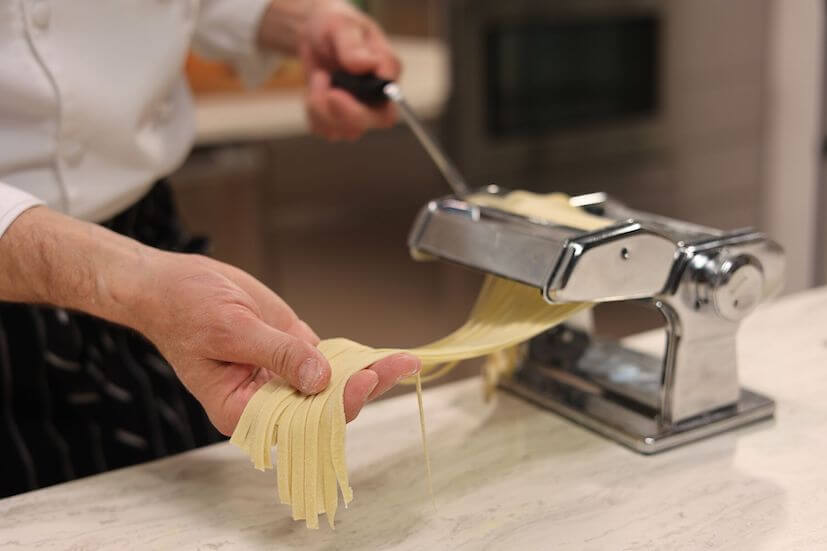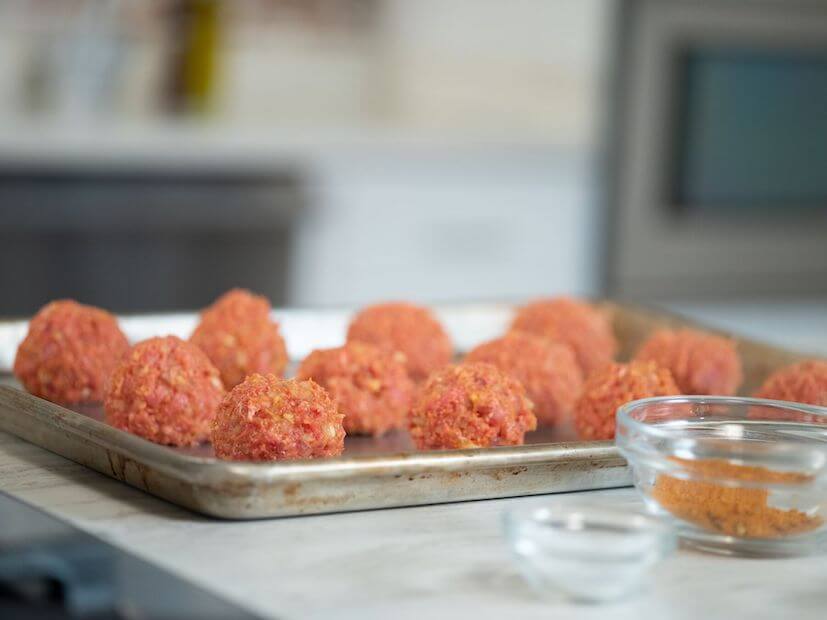Different Methods Of Cooking Meatballs
Crispy on the outside, tender on the inside, and bursting with hints of fat and spice, well-cooked meatballs are a crowd pleaser. However, poor cooking can turn these meaty bites into flavorless pucks or even make eaters sick.
Just like there are hundreds of variations of meatball recipes (we won’t argue that your grandma’s recipe is best), there are also numerous ways to cook meatballs. One method isn’t necessarily better than the other, but each way offers unique advantages and results.
We’re going to introduce you to some of the different methods of cooking meatballs so you can pick the option that’s best for you.
Different Methods of Cooking Meatballs
When it comes time to cook your meatballs, you have multiple options to choose from. And you don’t have to pick just one! You can also mix and match the following cooking methods until you end up with a meatball you’re proud to serve to even the harshest of critics.
Pan Fry: For Supremely Crispy Meatballs
If you love a crispy crust on your meatball, then pan frying could be the cooking method for you. As the name suggests, this method involves frying your meatballs on top of the stove. While pan frying does produce a nice crisp crust, it is also the most labor-intensive method.
To begin, select a neutral-flavored oil with a high smoke point. Some good options include sunflower oil, vegetable oil, and safflower oil. Add about a quarter of an inch of oil to a frying pan or sautee pan and heat over medium-high heat. Once the oil begins to shimmer, you can carefully add the meatballs one at a time.
Make sure to not crowd them in the pan—allow at least half an inch of space between each meatball. Once the meatballs are browned on one side, gently turn them over to the other side. Repeat this process until they are golden on all sides.
Depending on the size of the meatballs and the oil temperature, the meatballs should take anywhere from 8-15 minutes to cook all the way through. Check to see that the interiors are no longer pink and their internal temperature has reached 160ºF.
At this point, the meatballs are ready to eat! However, you can also simmer your fried meatballs in a pan of sauce for a few hours. This will help infuse the sauce with the meatball flavor, and vice versa.
Bake: For Easily Browned Meatballs
If you like a crispy exterior on your meatballs, but don’t want to spend time hovering over a pan filled with hot oil, turn to the oven. Baking meatballs allows them to become nicely browned, all while using less oil and putting up barely any fuss.
Start by preheating the oven to 400ºF. Next, line a baking sheet with foil to allow for easy cleanup. Place the meatballs on the baking sheet with at least half an inch of space between each meatball.
Put the meatballs in the oven and allow them to bake for 8-10 minutes, or until the bottoms are nicely browned. At this point, remove the pan from the oven, turn the meatballs over, and return the sheet to the oven. Bake for 10-15 minutes longer, or until the internal temperature reaches 160ºF.
Just like with frying, the cooked meatballs are ready to eat once they reach 160ºF. However, you can also let them simmer in a pot of sauce before enjoying.
Poach in Sauce: For Soft and Tender Meatballs
If you want a supremely tender meatball that practically melts in your mouth, poaching may be the cooking method for you. Rather than exposing meatballs to hot oil or air that creates a crispy exterior, raw meatballs are dropped into a simmering sauce and poached until they are fully cooked.
To begin, prepare your sauce in a large saucepan and heat it until it’s simmering. Once the sauce has come to temperature, you can drop in the meatballs. Be careful to avoid splashing sauce and/or making the tender meatballs fall apart.
Let the meatballs simmer over low heat for 2-3 hours, or until the interiors reach 160ºF. While you can stir the sauce and meatballs during the cooking process, be careful while doing so—the lack of crispy exterior means these meatballs are extra tender and prone to breaking.
Tips for the Best Meatballs
No matter which meatball cooking method you choose, keep these tips in mind.
Mind Your Meat
Whether you choose pork, veal, lamb, or beef, you’ll want to start with high-quality meat. A blend of meats often adds complexity in flavor, which results in a mouth-watering meatball.
To keep the meatballs juicy but not dripping in fat, aim for meat that is 20-30% fat and 70-80% lean.
Don’t Overmix
It’s true that you want to fully incorporate herbs, cheeses, and spices into the ground meat. But you should do so carefully and gently!
Overmixing can lead to a meatball that is dense, no matter how you choose to cook it. Mixing with your hands, rather than a stand mixer or spoon, will help keep the mixture as light and airy as possible.
Use Soft Hands to Form the Meatballs
Along with being gentle when you combine the meatball ingredients, you’ll also want to avoid roughly handling the mixture when you form your meatballs. A quick scoop with a spoon or your hands is better than rolling the mixture between your hands over and over again. Remember, less touch is better when it comes to forming the meatballs!
Keep Learning About Cooking Methods
When it comes to cooking meatballs, there’s not one best method—but there likely is a cooking method that works best for you! Once you’ve discovered your favorite way to make meatballs, you can move on to learning about cooking more of your favorite dishes.
No matter what dish you’re interested in learning about, a solid foundation in the culinary arts can make your time in the kitchen easier…and more fun. Escoffier offers a variety of culinary arts programs to help you advance your culinary skills, and maybe even start a culinary career.
This article was originally published on March 30, 2013, and has since been updated.







Recent Comments